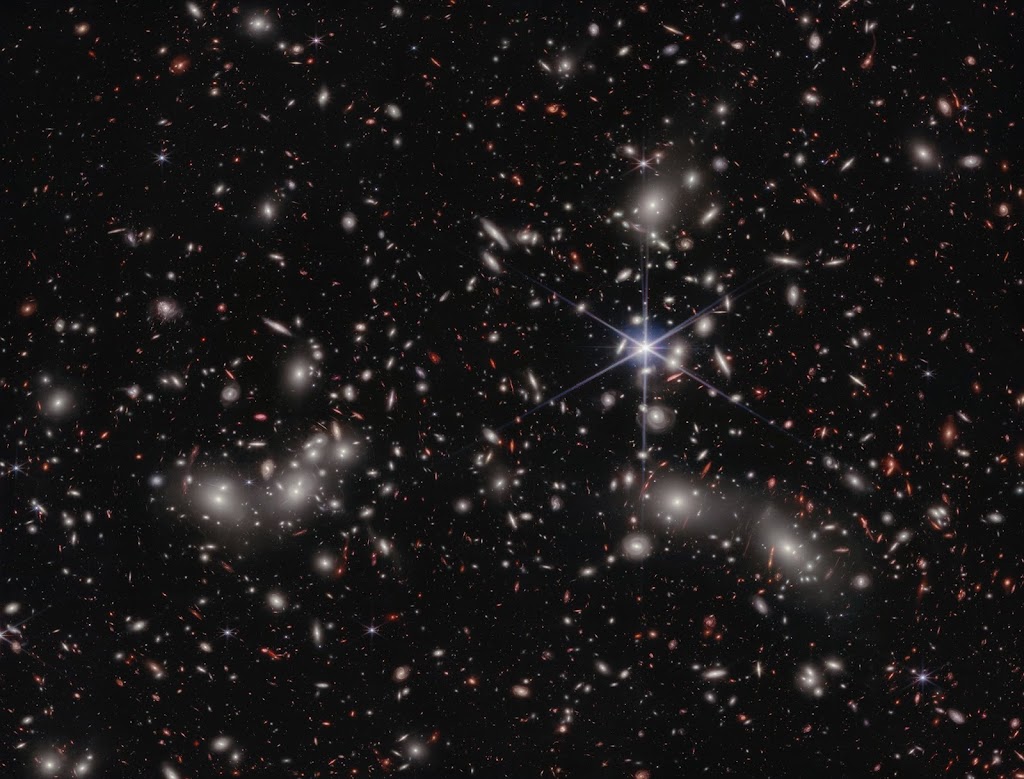Astronomers have recently released the latest Deep Field images from NASA’s James Webb Space Telescope, showcasing never-before-seen details in the Pandora Cluster (Abell 2744). This patch of space has become of particular interest to scientists due to its high concentration of galaxies.
The images from the James Webb Space Telescope have allowed astronomers to gain an unprecedented look at this cluster, revealing details that were never before known. Through this detailed analysis, astronomers are able to better understand the structure and evolution of the cluster, as well as how these galaxies interact and form. These new images provide an invaluable resource for exploring this fascinating region of space.
This single image contains an estimated 50,000 sources of near-infrared light, each of which has traveled different distances to reach the telescope’s detectors. This image is a reminder of the incredible size and scale of our universe, with each source of light potentially being an entire star system, or a distant galaxy. Not only does it show us the beauty of space, but it also serves as a reminder of how little we actually know about what lies beyond our own tiny corner of the universe.
Webb’s view displays three massive groups of galaxies merging to form a megacluster,The sheer combined mass of these galaxy clusters creates an immense gravitational lens, which is a natural magnifying effect of gravity,This powerful lens then allows many more distant galaxies in the early universe to be viewed in breathtaking detail with the use of Webb’s telescope.
By combining three massive clusters of galaxies, scientists are able to observe galaxies that are much farther away than was possible before, providing insights into the earliest stages of the universe, By studying the megacluster and its contents, astronomers can gain a greater understanding of the formation and evolution of the universe.
The Hubble Space Telescope has previously only studied Pandora’s central core in detail, but now, with the combination of Webb’s powerful infrared instruments and a comprehensive mosaic view of the region’s various lenses, astronomers are aiming to achieve a balance of breadth and depth. This newfound knowledge is expected to provide insight into the formation of stars, planets, and galaxies, as well as gain a better understanding of the physical and chemical processes that drive the evolution of these structures.
Furthermore, the combination of Webb’s powerful infrared instruments and the mosaic view that spans across many regions of lensing should be able to provide high-resolution imaging, allowing astronomers to detect faint objects that would otherwise remain hidden. Ultimately, this new development is set to open up a new realm of discovery in terms of exploring the unknown depths of space.
Abell 2744, also known as Pandora’s Cluster, is a gargantuan galaxy cluster located 4 billion light years away from Earth. The cluster formed over a period of 350 million years, when at least four smaller galaxy clusters collided and merged together, resulting in the formation of this cosmic wonder. It is truly amazing to think that it took 350 million years for all of these galaxies to collide and form this single giant cluster. Abell 2744 is so vast and powerful that it has the potential to disrupt and affect events in our own Milky Way Galaxy, making it all the more remarkable.


